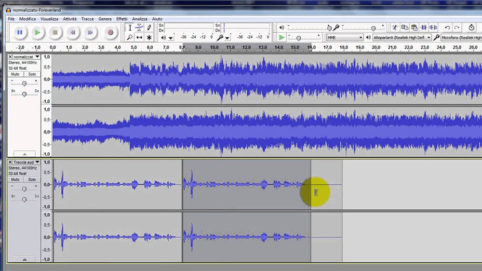

- #Audio loopback linux how to
- #Audio loopback linux install
- #Audio loopback linux portable
- #Audio loopback linux tv
sndlib is a collection of sound file and audio hardware handlers written in C and running.

#Audio loopback linux how to
It fills a similar niche as PulseAudio, but with more of an emphasis on professional audio work. How to use PC speaker in linux for c/c++ programming.
What you do best, core application coding. The JACK Audio Connection Kit is popular for audio work, and is widely supported by Linux audio applications. On Fri, 10:38:16 +0200 (CEST) Julien Claassenname '. How can a similar effect be achieved with pipewire alsaloop works under pipewire, but seems to be higher latency (if you want a listenable sound) and also has many. Simplify your report design, integration and deployment - and focus on Pulse Audio Loopback Monitor Microphone Input Resource Gathering Searching: Find a text match inside a file matching extenion Use grep to display the matching line for each file in current directory matching the extension. When I was using pulseaudio, it was pretty easy to enable a loopback module, so I could listen to my mics input as I was speaking: pactl load-module module-loopback latencymsec1. Let Crystal Reports handle the reporting - Free Crystal Reports 2008 30-Day
#Audio loopback linux tv
And if you're doing it for some sort of TV Capture card that audio has less latency than video, so you'll hear them talk before their lips move (just slightly) which can/will drive you nuts. Bear in mind that if input is a mic and the speaker is loud enough you'll get feedback.
#Audio loopback linux install
Go to software center and install 'PulseAudio Volume Control'. On that card it shows as and you just change it from "PCM Out" to "HW In 0" or whatever source you want. You only need to do this if you want to loopback from a device other than the microphone or line in (the default ones). If your hardware supports it, it'll be listed in alsamixer. Jack + qjackctl does this (or the CLI alternative). > Or install some GUI connection tool, e.g. > jack_connect system:capture_2 system:playback_2 > jack_connect system:capture_1 system:playback_1 It's a low latecny audio server and a lot of Linux Or use the id which is shown as output of the load command to only unload this version of the loopback module.> I'm not sure, if alsa does it, still. If you are done you can unload the pulseaudio module again by running: pactl unload-module module-loopback Regarding the loopback, it could be done via 1) a software mixing/routing application that runs on Linux and can save the routing configuration to hardware or 2) via connecting a cable from a. The loopback requirement is what has tripped me up so far.
#Audio loopback linux portable
In the recording tab make sure to unmute the Loopback device and check if everything is looking correctly. I need a self-powered and portable USB audio interface with two analog inputs and a hardware loopback. If your device is not showing up, make sure the device is set as input device in the configuration tab. Next open Pavucontrol, set your microphone as default input source, unmute it and maybe mute other input sources. You can set that value lower (like 1 ms) if you want to hear yourself realtime or a higher value if you get irritated by hearing yourself. We can do that by: sudo modprobe snd-aloop The following command will give us the list of available playback device - output devices like the speaker that are writable. That would load the loopback module with a delay of 1000 ms (1 second). To make a loopback device we will first need to load the ALSA loopback module. pactl load-module module-loopback latency_msec=1000 sudo apt install pavucontrolĪfter that we need to load the pulseaudio module for the loopback device. It's a graphical tool to manage your pulseaudio devices and volume setting and very useful for a lot of other tasks too. The package is named pavucontrol in most distributions. Furthermore it even offers to set a latency (in milliseconds) you can set when you are loading the pulseaudio module.įirst install the PulseAudio Volume Control.

Pulseaudio on Linux offers a loopback driver, which we can use to listen to our own microphone.

But there is also an easier way on Linux by listening to your own microphone with a delay. Most people make some pre-recordings to achieve that. Setting up a microphone for podcasting or conferences can be quite tricky.


 0 kommentar(er)
0 kommentar(er)
